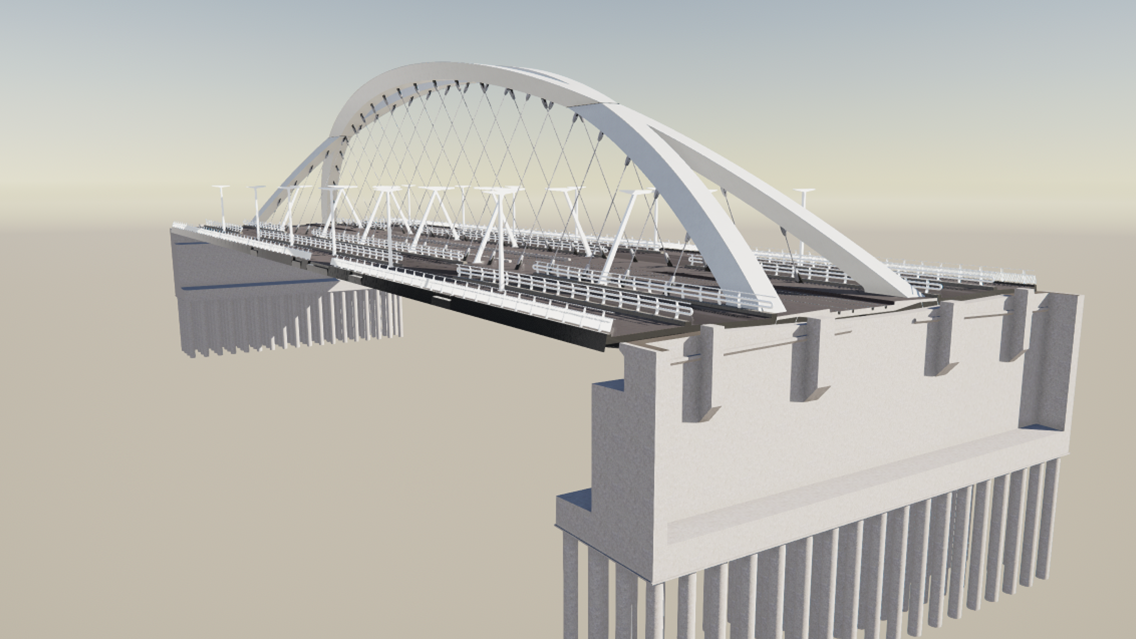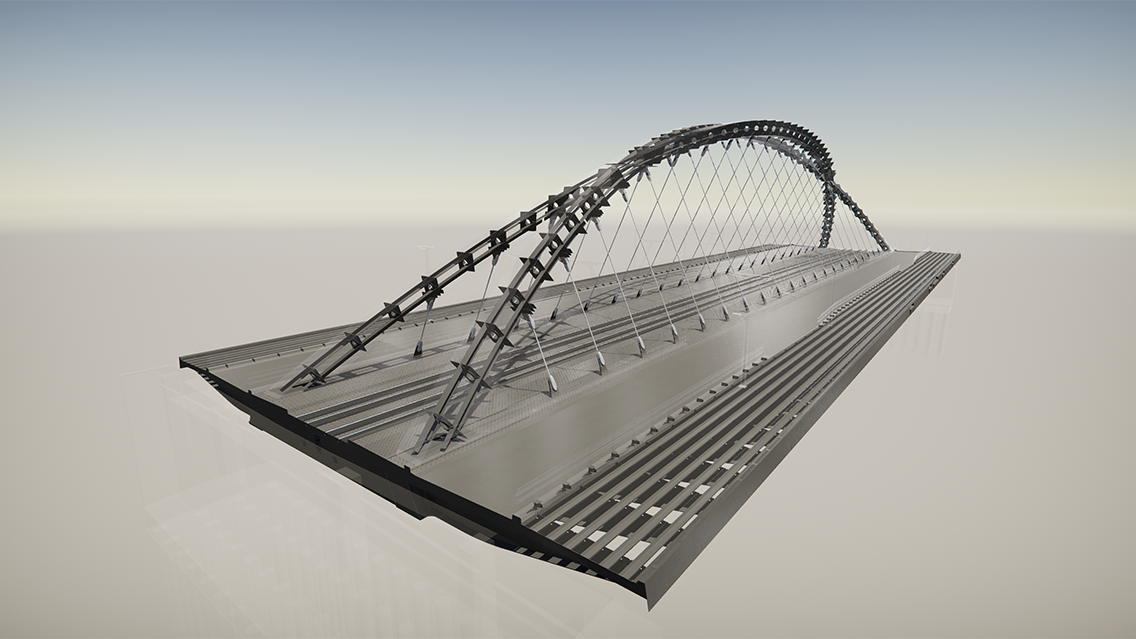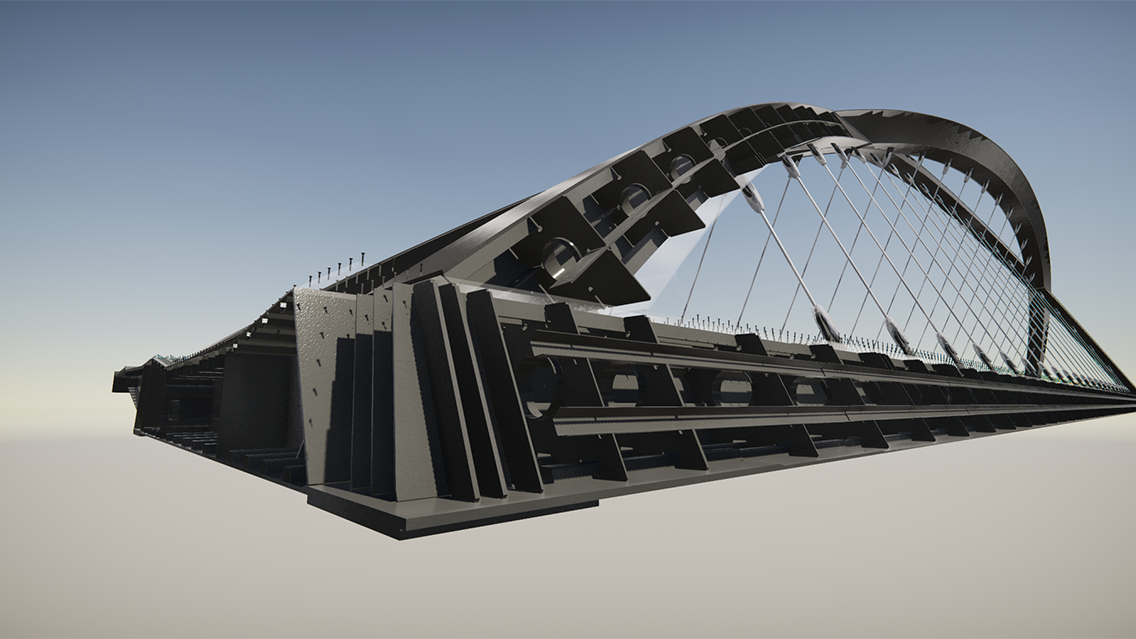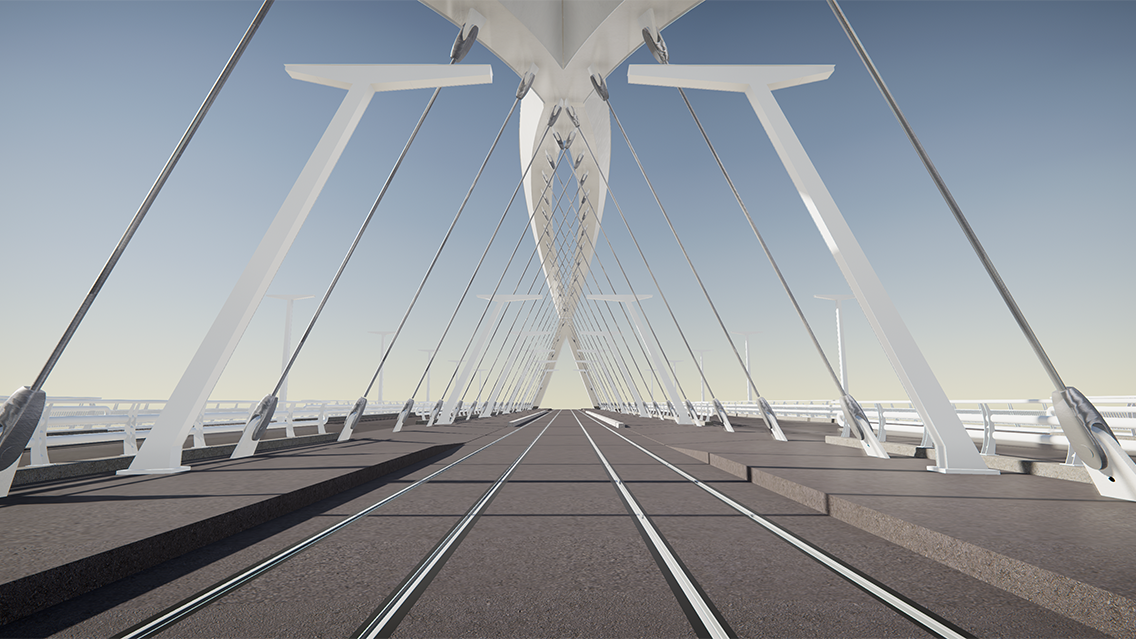The overpass located in Hungary, Budapest, between District 13 and 14, carries the road, tram, bicycle and pedestrian traffic of Szegedi út (Road Szegedi) over the electrified railway tracks of Rákosrendező Pályaudvar (Railway Station Rákosrendező), with granting space for the extension of the Millenniumi Földalatti Vasút (Millenium Underground Railway) in front of abutment „A”. The connection between the tram stop on the bridge and the Rákosrendező Pályaudvar (Railway Station Rákosrendező) under the bridge is ensured according to both the existing and the planned track layout and platform layout.
Structure description:
The bridge is a steel tied arch bridge with an orthotropic deck. The arches are inclined and cross each other, creating a unique aesthetic experience for those crossing or waiting on the bridge. The arches, which intersect with each other, are braced by each other to provide stability.
The cross-section of the bridge is 45.2 meters extra wide, accommodating a double-track tramway, pedestrian platforms on both sides, 2×2 lanes for vehicles, and additional pedestrian and bicycle paths. The bridge’s supports are 146,0 meters apart.
Methods and tools:
The biggest challenge in the structural designing of the bridge was to optimize the structural solutions of the extra wide cross section and the arch supports. Several tilt angles have been tested to ensure that the arch supports are both structurally and aesthetically correct. Rhino and Grasshopper were used to determine the main boundary planes of the superstructure and the arch supports, and also to determine the position and configuration of the suspension cables and their connecting plates. With the help of reference models, the rest of the details of the bridge were developed in Tekla Structures. By using dynamically adjustable Custom Components, the bridge was efficiently and quickly modeled .
The reference models of the road models and models used for the static calculations were imported to Trimble Connect and compared with the bridge model. With this the discussions and consultations were easy.
Benefits of BIM:
The use of parametric design tools allows for more interactive, multi-solution options for the most efficient design development. In the design of this bridge, we have gained a lot of experience in parametric design and automation of more complex geometries. The data exchange with the road and tramway designers was free of data gaps and errors thanks to the uniformed interface and system.
Designers:
Pál Gábor (Lead Engineer)
Hiros Károly (Project manager, designer)
Hunyadi László (superstructure and substructure analysis)
Szabados Mihály (chief structural steel designer)
Mészáros Norbert (3D modeller, designer, editor)





